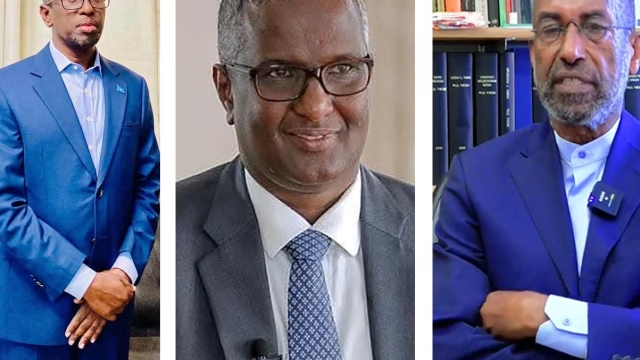Cell phones may bring relief to famine victims in parts of Somalia controlled by al Shabaab…

![]()
Cell phones may bring relief to famine victims in parts of Somalia controlled by al Shabaab insurgents as donors seek new ways to circumvent the hard-line militants, a senior U.S. official said on Tuesday.
Rajiv Shah, head of the U.S. Agency for International Development, or USAID, said that despite al Shabaab’s ban on foreign aid in regions they control, progress was being made to reach about 2.7 million people desperately in need of help.
“It is difficult to provide large-scale commodity support. Food convoys have been attacked, so we’re trying a number of more innovative approaches,” Shah told Reuters on the sidelines of the U.N. General Assembly in New York.
Cell phone networks and the traditional “hawala” money transfer system used in many Islamic societies are two such routes, Shah said, while aid groups from Gulf Arab countries and elsewhere were also making inroads.
“We’re trying cash distributions through the hawala system and through mobile phones and then concomitantly flooding border markets with food so that traders can then make the connections,” Shah said.
Al Shabaab, a hard-line Islamist group linked to al Qaeda which controls most of the southern part of Somalia, banned food aid last year and kicked many groups out, saying aid creates dependency.
Some 3.7 million Somalis are at risk of starvation in the worst drought in decades, including some 2 million in rebel-held regions were most major aid agencies cannot reach.
Some local agencies are allowed to deliver aid to these areas, but this is not enough for all those who need it.
The rest of Somalia is expected to slide into famine by the end of the year as the drought gripping the Horn of Africa affects more than 13 million people.
Shah said U.S. efforts to improve agricultural techniques and technology in the region, coupled with economic support programs to make local communities more resilient, had helped to prevent the famine from broadening into a wider crisis as it did 1984-85 and again in 1998-2000.
But he said the situation remained critical, and new strategies aimed at enabling people to secure food supplies close to home were aimed at forestalling a broader flood of refugees to already overburdened camps.
“People leaving their communities going on these treks where they almost certainly will be assaulted, robbed, often raped,” Shah said. “The risks of participating in humanitarian action in the place they are, is probably considerably lower.”
EXEMPTIONS NOT ENOUGH
The United States in August said it would not invoke anti-terror laws to prosecute nongovernmental groups working in southern Somalia if some aid falls into the hands of al-Shabaab, which is on the official U.S. terror blacklist.
But Shah said the exemptions had had little effect as most foreign aid organizations continued to have almost no safe access to al Shabaab-controlled regions.
The United States has contributed about $600 million to famine relief efforts in the Horn of Africa, more than half the total global response.
But Shah said he was worried that future efforts could be hobbled as U.S. lawmakers try to find a further $1.2-$1.5 trillion in budget cuts to trim the huge U.S. federal deficit.
“I am extraordinarily worried because that would be very counterproductive,” he said, saying a further destabilization of Somalia and strengthening of al-Shabaab could have direct security consequences for the United States.
Source: Reuters


